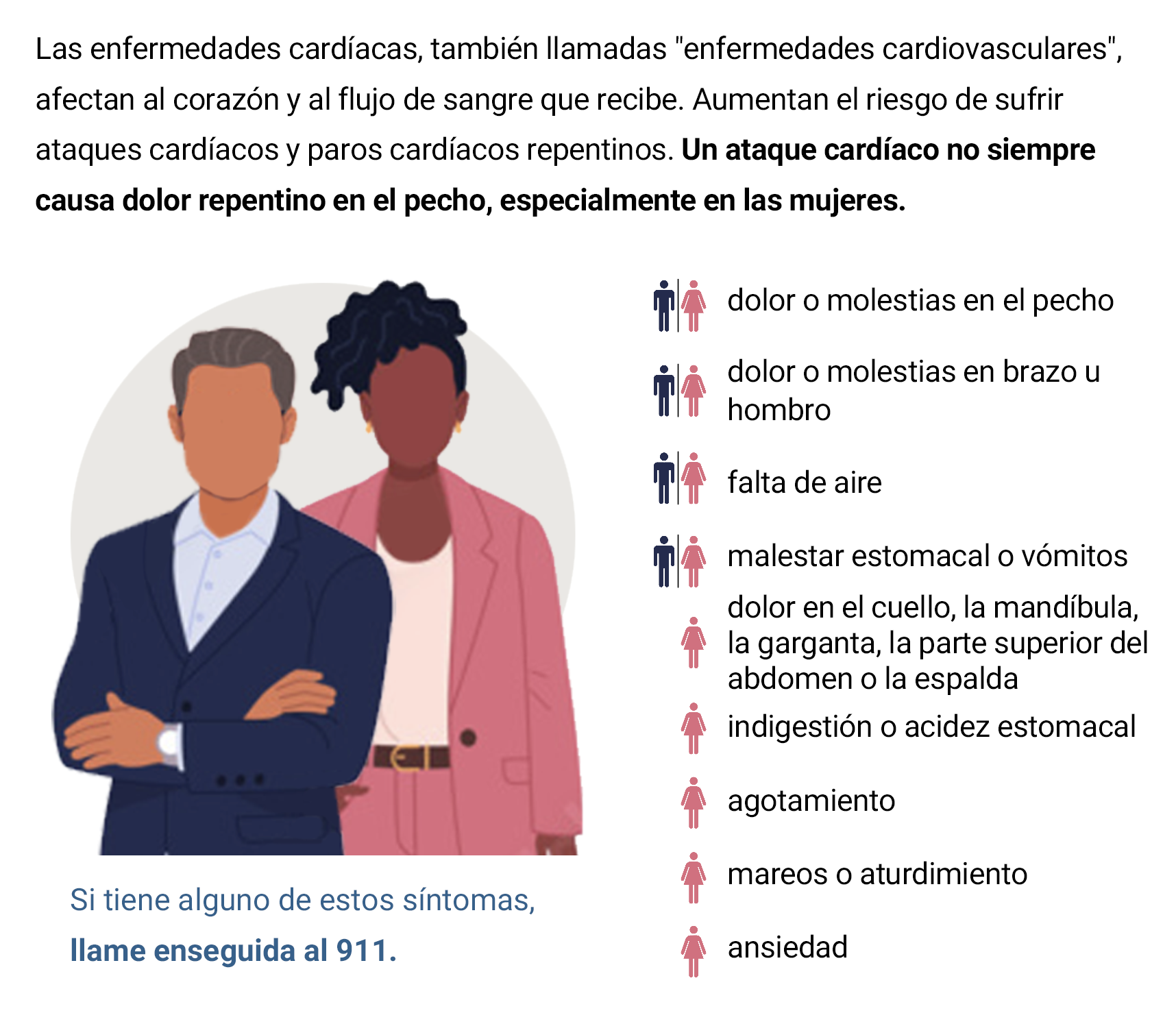

Esta página puede tener documentos que no pueden leerse con el software del lector de pantalla. Para obtener ayuda con estos documentos, llame al número que figura en el reverso de su tarjeta de asegurado.
¡Sumérjase en el bienestar con seminarios web creados especialmente para usted! Estas presentaciones educativas tratan un tema nuevo cada mes. ¡Explore los próximos temas e inscríbase hoy mismo!
Esta presentación abarca:
¡Inscríbase hoy!
Esta presentación abarca:
¡Inscríbase hoy!
Esta presentación abarca:
¡Inscríbase hoy!
Esta presentación abarca:
¡Inscríbase hoy!
Esta presentación abarca:
¡Inscríbase hoy!
Esta presentación abarca:
¡Inscríbase hoy!
Tenemos recursos para ayudarlo a mantener el control de su salud:
Consulte trucos y consejos anteriores.
¡Esperamos que estén disfrutando del verano! A continuación, encontrará algunos recursos que puede utilizar durante las vacaciones escolares y a lo largo de todo el año.
Manténgase en contacto
¿Necesita comunicarse con nosotros? Aquí le indicamos cuándo y cómo puede comunicarse con nosotros durante el verano.
El departamento de Atención al Asegurado está disponible llamando al 1-800-223-8778, de lunes a viernes, de 7 a. m. a 6 p. m. Puede acceder a su cuenta MyTRS para encontrar respuestas a preguntas comunes en cualquier momento.
Puede comunicarse con un asesor personal de la salud las 24 horas del día, los siete días de la semana, llamando al 1-866-355-5999. o a través de la Aplicación BCBSTX si necesita ayuda o tiene preguntas sobre su cobertura médica.
Participantes de TRS-ActiveCare Primary y TRS-ActiveCare Primary+: Usted no tiene cobertura fuera de la red. Si acude a un profesional médico fuera de su red, usted será responsable de pagar el costo total de la atención médica que reciba. Puede buscar un profesional de la red aquí.
Participantes de TRS-ActiveCare HD: Usted cuenta con una red nacional y puede consultar a médicos en cualquier estado.
¿Necesita atención médica mientras está fuera del país? Visite Blue Cross Blue Shield Global Core para obtener información sobre cómo funciona. O llame a un asesor personal de la salud en cualquier momento, de día o de noche, para recibir ayuda.
Usted cuenta con atención virtual a precio módico las 24 horas del día, los 7 días de la semana, ¡para que pueda recibir ayuda desde cualquier lugar del mundo, en cualquier momento! Es muy fácil de usar:
Cuando tenga una emergencia, siempre reciba atención lo más rápido posible. La atención médica de emergencia está siempre incluida en su cobertura TRS-ActiveCare, sin importar dónde se encuentre en el mundo ni qué cobertura tenga.
La atención virtual es rápida, fácil y económica, e incluye tanto la salud física como la mental. Cuesta menos que la atención médica inmediata (¡y MUCHO menos que la sala de emergencias o la atención médica fuera de la red!) y está disponible durante todo el día. Obtenga más información sobre la atención virtual y regístrese.
Sea lo que sea que le interese esta temporada, tenemos recursos para ayudarle a:
¡Hasta el próximo año!
La mala alimentación y la falta de ejercicio pueden provocar la formación de placa en las arterias. La acumulación de placa puede comenzar ya en la adolescencia. Esto allana el camino para un posible ataque cardíaco.
Hay opciones de estilo de vida y cambios que puede hacer para reducir el riesgo. Cuando controla sus factores de riesgo, ayuda a proteger su corazón. Comenzar es fácil.
Una alimentación saludable no tiene por qué ser un problema. No tiene que dedicar mucho tiempo a controlar sus calorías diarias ni comprar productos dietéticos especiales. Busque un enfoque saludable para lo que come y céntrese en alimentos sencillos, fáciles de encontrar y sanos.
Hable con el médico antes de empezar un nuevo plan de alimentación para saber qué cambios son los más adecuados para usted.
La salud del corazón no solo depende de lo que se come. El corazón es un músculo: necesita "entrenamiento". Hacer ejercicio no significa entrenar para una maratón. Los tipos de ejercicio más importantes para el corazón son el entrenamiento aeróbico y el de resistencia.
El ejercicio aeróbico implica movimientos repetidos que aumentan la frecuencia cardíaca y respiratoria. Ayuda al corazón a bombear con más eficacia, mejora la circulación y la presión arterial, y reduce el riesgo de enfermedades cardíacas, derrames cerebrales y diabetes de tipo 2. Intente hacer al menos 30 minutos de actividad aeróbica moderada al día, cinco días a la semana, por ejemplo:
El entrenamiento de resistencia, o trabajo de fuerza, ayuda a incrementar la masa muscular y a reducir la grasa corporal y otros riesgos de enfermedades cardíacas. Funciona mejor en combinación con ejercicio aeróbico. Agregue actividades de fortalecimiento muscular a su rutina dos veces por semana como las siguientes:
Debe hablar con el médico antes de empezar una nueva rutina de acondicionamiento físico. Recuerde que un poco significa mucho cuando se trata de mejorar su condición física. Empiece en un nivel que le resulte cómodo e incremente la intensidad y el tiempo a medida que se hace más fuerte.
Su cobertura TRS-ActiveCare puede ayudarle a realizar cambios saludables en su estilo de vida, como comer mejor y hacer ejercicio. Inscríbase en el programa de acondicionamiento físico para acceder a una red nacional de gimnasios con descuento, trabaje en su nutrición con un asesor de bienestar o inscríbase en un curso digital a través de Well OnTarget®.
¿En qué consiste la dieta MIND?, Food Insight, Consejo Internacional de Información Alimentaria, 2019; Dietas a debate: ¿En qué consiste la dieta MIND?, Baylor College of Medicine, 2020; 3 tipos de ejercicio que mejoran la salud del corazón, Johns Hopkins Medicine.
Las enfermedades cardíacas son la principal causa de muerte de hombres y mujeres en Estados Unidos. Con tanto en juego, es inteligente conocer las señales de advertencia y las formas de reducir el riesgo.

Un ataque cardíaco se puede sentir así:
No deje que el miedo a equivocarse le impida hacer una llamada que puede salvarle la vida. Si no se trata de un infarto, esos mismos signos suelen advertir enfermedades cardíacas. Además de los síntomas que comparte con los ataques cardíacos, las enfermedades cardíacas pueden producir:
Diversos trastornos de salud, hábitos de vida y antecedentes familiares pueden incrementar el riesgo de padecer enfermedades cardíacas:
No puede controlar su historia familiar, pero la buena noticia es que muchos ataques cardíacos pueden prevenirse con los cambios de estilo de vida adecuados. La dieta y el ejercicio son un buen comienzo. Tiene acceso a numerosos recursos con su cobertura TRS-ActiveCare.
Acerca de las enfermedades cardíacas, Centros para el Control y la Prevención de Enfermedades, 2022. Las mujeres y las enfermedades cardíacas, Centros para el Control y la Prevención de Enfermedades, 2023.
Cáncer de mama
Saber cómo se ven y se sienten sus senos le ayudará a notar posibles síntomas preocupantes. Hágase la costumbre de examinarse una vez al mes.
1. Párese frente a un espejo con las manos en las caderas y observe sus senos. Busque lo siguiente:
2. Busque los mismos cambios con los brazos levantados.
3. Busque bultos estando acostada y de pie.
Haga clic aquí para obtener más información sobre los autoexámenes de seno, incluidas imágenes instructivas.
Cáncer de la piel
El mejor momento para realizar este examen es después de una ducha o baño. Revísese la piel en una habitación bien iluminada. Utilice un espejo de cuerpo entero y un espejo de mano. Lo mejor es comenzar detectando dónde están sus marcas de nacimiento, lunares y otras marcas, y su apariencia y sensación habituales.
Busque estas marcas:
Examínese de pies a cabeza.
1. Mire su cara, cuello, orejas y cuero cabelludo. Es recomendable usar un peine o un secador de pelo para abrir el cabello y ver mejor.
2. Mírese por delante y detrás en el espejo. Luego, levante los brazos y observe el lado izquierdo y el derecho.
3. Flexione los codos. Mire atentamente sus uñas, palmas, antebrazos (incluida la parte inferior) y parte superior de los brazos. Examine la parte posterior, frontal y lateral de sus piernas. También revise alrededor del área genital y entre las nalgas.
4. Siéntese y examine de cerca sus pies, incluidas uñas, plantas y entre los dedos.
Al revisar su piel con regularidad, notará qué es normal en usted. Si encuentra algo inusual, consulte a su médico de cabecera.
Cáncer de testículo
Los autoexámenes testiculares regulares ayudan a identificar crecimientos tempranos, cuando las posibilidades de un tratamiento exitoso del cáncer de testículo son mayores.
Es mejor realizar un autoexamen testicular después de una ducha tibia debido a que el calor relaja el escroto, lo que facilita la detección de cualquier anomalía. Siga estos pasos todos los meses:
1. Párese frente a un espejo. Compruebe si hay hinchazón en la piel del escroto.
2. Examine cada testículo con ambas manos. Coloque los dedos índice y medio debajo del testículo con los pulgares encima. Deslice el testículo suavemente entre los pulgares y los dedos. No se alarme si un testículo se siente un poco más grande que el otro. Es normal.
3. Busque el epidídimo, la estructura suave en forma de tubo detrás del testículo que recolecta y transporta los espermatozoides. Si está familiarizado con esta estructura, no la confundirá con un bulto sospechoso. Los bultos cancerosos, por lo general, se encuentran a los lados del testículo, pero también pueden aparecer en el frente.
Si encuentra un bulto, consulte a su médico de cabecera. Solamente un médico puede hacer un diagnóstico certero.
Fuente: Autoevaluación, Departamento de Salud Pública de Illinois.